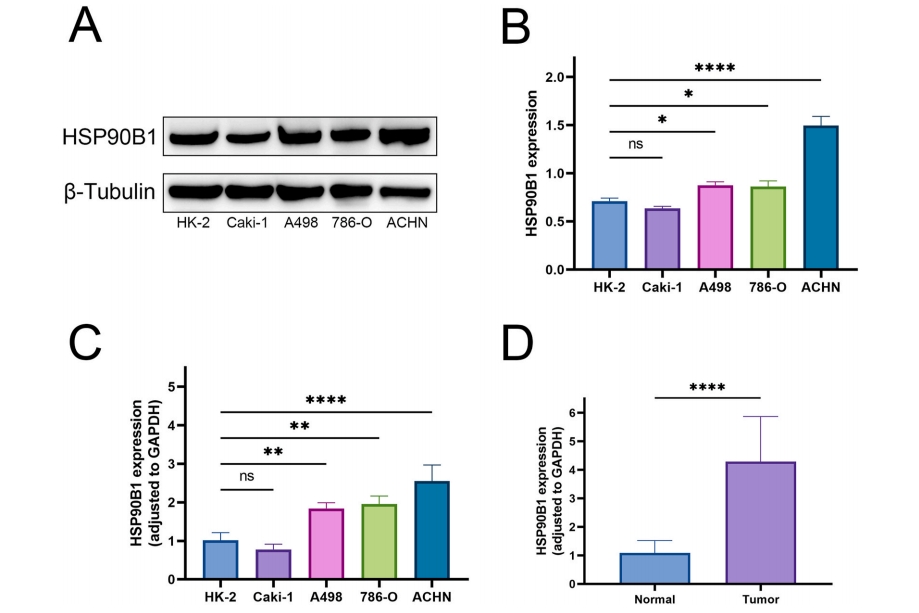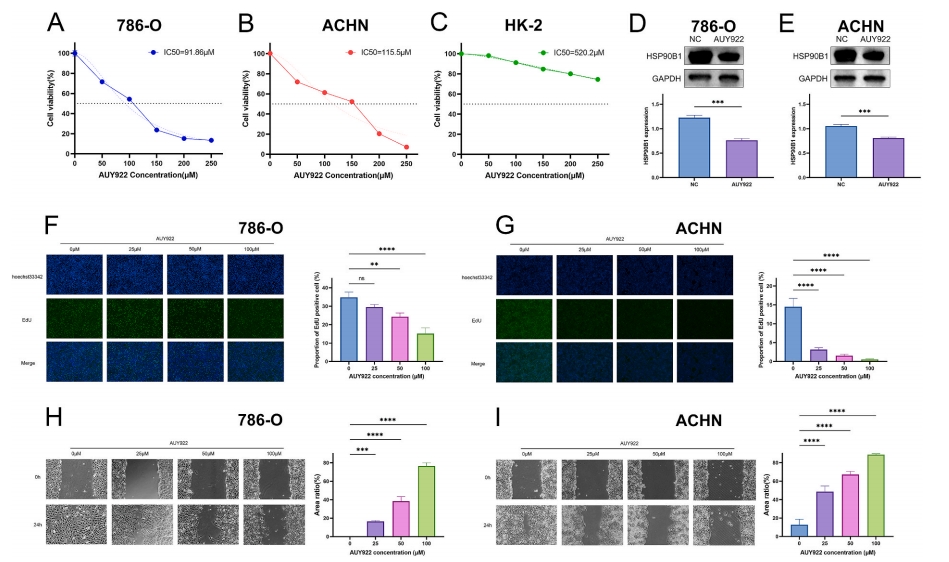AUY922 improves sensitivity to sunitinib in clear cell renal cell carcinoma based on network pharmacology and in vitro experiments
Zixuan Chen , Xing Jia , Yuesong Cai, Ya Song, Yanjun Tong , Sheng Cheng , Min Liu
ABSTRACT
Clear Cell Renal Cell Carcinoma (ccRCC), the most prevalent form of renal cell carcinoma (RCC), poses a significant threat to human health due to its rising morbidity and mortality rates. Sunitinib, a pivotal targeted drug for the treatment of ccRCC, presents a significant challenge due to the high susceptibility of ccRCC to resistance. HSP90 inhibitor AUY922 has demonstrated antitumor activity in a range of cancer types.
However, its efficacy in combination with sunitinib for ccRCC treatment has not been evaluated.
In this study, we employed bioinformatics, network pharmacology, and in vitro assays to verify that AUY922 inhibits cell viability, proliferation, and migration of ccRCC cell lines 786-O and ACHN, with IC50s of 91.86 μM for 786-O and 115.5 μM for ACHN. The effect of AUY922 enhancing the inhibitory effect of sunitinib on ccRCC was further confirmed. The CCK-8 assay demonstrated that the IC50 of sunitinib was reduced from 15.10 μM to 11.91 μM for 786-O and from 17.65 μM to 13.66 μM for ACHN, after the combined application of AUY922. The EdU assay and wound healing assay indicated that AUY922 augmented the inhibitory impact of sunitinib on the proliferation and migration of ccRCC cells. Western blot and RT-PCR analyses demonstrated that AUY922 increased the sensitivity of ccRCC cells to sunitinib by targeting the HIF-1α/VEGFA/VEGFR pathway.
Our study represents the first investigation into the role and mechanism of AUY922 in enhancing the sensitivity of ccRCC to sunitinib. Inconclusion, the findings indicate the potential for AUY922 to enhance the therapeutic efficacy of sunitinib and overcome sunitinib resistance in ccRCC.

HSP90B1 is highly expressed in ccRCC tissues and renal cancer cells. (A) HSP90B1 expression in renal cancer cells was determined by Western Blot (The original image is provided in the Supplementary Fig. S1); (B) Quantification based on β-Tubulin served as internal reference of Western blot of HSP90B1 in cell lines; RT-PCR analysis of HSP90B1 ex-pression in (B) renal cancer cells and (C) ccRCC tissues based on GAPDH served as internal reference.

AUY922 exerts an inhibitory effect on renal cancer cells. Cell viability of the cell lines was assessed using the CCK-8 assay: (A) 786-O, (B) ACHN, (C) HK-2; Western blot Images and quantification based on GAPDH served as internal reference of HSP90B1 expression after treating with 50 μM AUY922(The original image is provided in the Supplementary Fig. S2): (D) 786-O, (E) ACHN; AUY922 inhibits the proliferation of ccRCC cells using the EdU assay: (F) 786-O, (G) ACHN. AUY922 inhibits the migration of ccRCC cells were assessed by using the wound healing assay: (H) 786-O, (I) ACHN.





